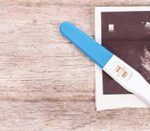 ATLANTA—With more than 3,000 abstracts from 103 countries presented at the 2019 ACR/ARP Annual Meeting in November, it was impossible for attendees to view them all. However, two ACR/ARP veterans—Arthur Kavanaugh, MD, from the University of California, San Diego, and John Cush, MD, from UT Southwestern Medical School, Dallas—chose to tackle the nearly impossible task and select the ones they thought were best.
ATLANTA—With more than 3,000 abstracts from 103 countries presented at the 2019 ACR/ARP Annual Meeting in November, it was impossible for attendees to view them all. However, two ACR/ARP veterans—Arthur Kavanaugh, MD, from the University of California, San Diego, and John Cush, MD, from UT Southwestern Medical School, Dallas—chose to tackle the nearly impossible task and select the ones they thought were best.
“We would like to reassure everyone that our choices were not influenced by the College, industry or people we shoot pool with,” Dr. Cush said.
Psoriatic Arthritis Prevention
Dr. Kavanaugh’s first choice was a study from Argentina, “Can Biologics ‘Prevent’ the Development of Psoriatic Arthritis in Psoriasis Patients?”
“This study covers a fascinating concept we’ve been thinking about for a while,” Dr. Kavanaugh said. The study’s objective was to analyze the incidence of psoriatic arthritis (PsA) in a large cohort of patients with psoriasis undergoing different treatments, based on the hypothesis that treatment with biologics may prevent the development of PsA.
“To address this,” Dr. Kavanaugh said, “they went into the medical record at the university and found just under 800 patients with skin psoriasis and looked at them according to their treatments; it could be biologic therapy, which was the treatment for about 100 patients, and other conventional DMARD [disease-modifying anti-rheumatic drug] systemic therapies. … After about 12 years, … fewer people who were treated with biologics—only one person out of the 92—developed psoriatic arthritis, and among the people who were on topicals only, it was 68. So 68 out of 600, that’s about 8%, and less than 1% for the biologic agent.”
“It would be great if that could be shown in a very large cohort,” Dr. Cush said.
Combating Hyperuricemia
The first abstract selected by Dr. Cush was from Poland, “Enteral Administration of ALLN-346, a Recombinant Urate-Degrading Enzyme, Decreases Serum Urate in a Pig Model of Hyperuricemia.”
“This is an animal model, of course, but the interesting thing here is that we know two-thirds of uric acid is excreted via the kidney, and one-third goes through the gut,” Dr. Cush said. “ALLN-346 is an early administered, non-absorbed, recombinant urate-degrading enzyme that’s taken orally and, therefore, helps reduce acid production in the GI [gastrointestinal] tract. They infused uric acid in the animals. They didn’t measure gout, just plasma uric acid levels. After they elevated those levels, they administered the recombinant protein, which showed a significant reduction in the uric acid levels from over 7 to 4.5.


